Purchasing a laundry appliance may not have the same social cache as an oven or hob, after all this workhorse tends to be a distress rather than carefully considered purchase used for social entertainment.

THE FWD91496W UK from Whirlpool boasts the FreshCare+ system and a Rapid 30 programme which can be used to wash lightly soiled clothes. FreshCare+ combines drum movement and steam injections to keep laundry fresh for up to six hours after the washing cycle has finished
But it is a particularly strong market, as business director of freestanding appliances for Hoover Candy UK Steve Macdonald points out: “Around 30% of the market for new major household appliances is comprised of the laundry sector and 47% of households report having bought a new washing machine or tumble dryer within the past three years.”
And, it could be argued, it is one of the most exciting appliance markets as laundry is technologically advanced.
Sponsored Video
Beko and Grundig owner Arcelik has recently created a filter to prevent cloth micro-fibres entering the ecosystem, not to mention a raft of connectivity now available across the board.
Rising laundry prices
But since laundry appliances are often bought in an emergency, following the breakdown of washing machines and tumble dryers, it means consumers may not have had time to save up for a speedy replacement. Therefore price is critical.

The C1381 from CDA has an 8kg capacity and offers 16 programmes including a 15 minute quick wash. In addition, it boasts a delay timer and extra rinse
In fact, brand manager of Indesit Sara Bazeley says: “According to research, price is the most important reason to consumers when looking to purchase a new tumble dryer, with 35% of those questioned specifically looking for a model that is inexpensive.”
However, according to Hotpoint, while there has been a small decline in volume sales for freestanding and built-in laundry appliances, in terms of value the market has seen growth.
Senior brand manager Catherine Balderson explains: “Although the volume of washing machines may have gone down marginally, the value is up showing that consumers are prepared to spend a bit more.”
Larger load sizes
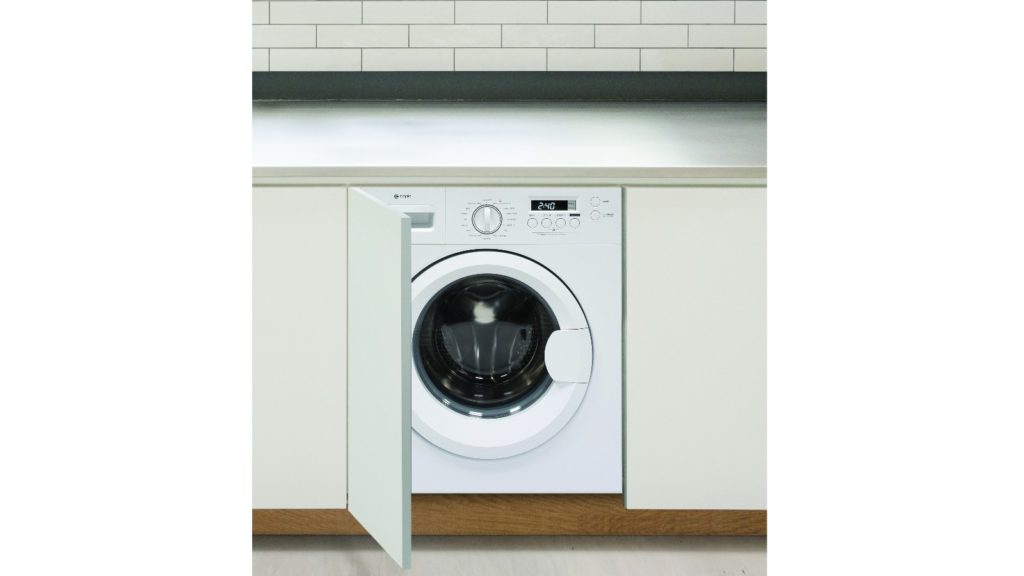
The WMi3005 washing machine, from Caple, boasts 16 programmes, including a 15 minutes Quick Wash, delay timer, pause and extra rinse function. It has an 8kg capacity and 310mm extra large door
Meeting the needs of time pressured consumers; manufacturers have created premium machines with larger capacities which means they can wash more in one go.
Brand manager of Whirlpool Charmaine Warner highlights their popularity: “Laundry appliances that boast larger capacities are proving popular with consumers as it allows for less frequent usage, saving the user both time and resources.”
And Catherine Balderson of Hotpoint agrees, pointing out statistics: “Market analysis has found that in 2018, 7.5% of washing machines bought had a capacity of less than 6kg, 58.2% had a capacity between 6kg and 8.9kg and 43.3% had a capacity of 9kg and above.”
It is perhaps, no surprise then, that Hotpoint has just launched a core range of washing machines available in capacities of 7, 8,9 and 10kg.
And even less of a shock, manufacturers are continuing to work on increasing load capacities, as product manager of Caple Luke Shipway comments: “We haven’t reached the maximum capacity yet, as technology continues to evolve to work on ways in which to increase drum size.”
Speed and materials
But it’s not simply about washing more in one wash, appliance manufacturers have also ensured the load can be laundered at a quicker speed too – but providing the same quality of wash as a lengthier cycle.
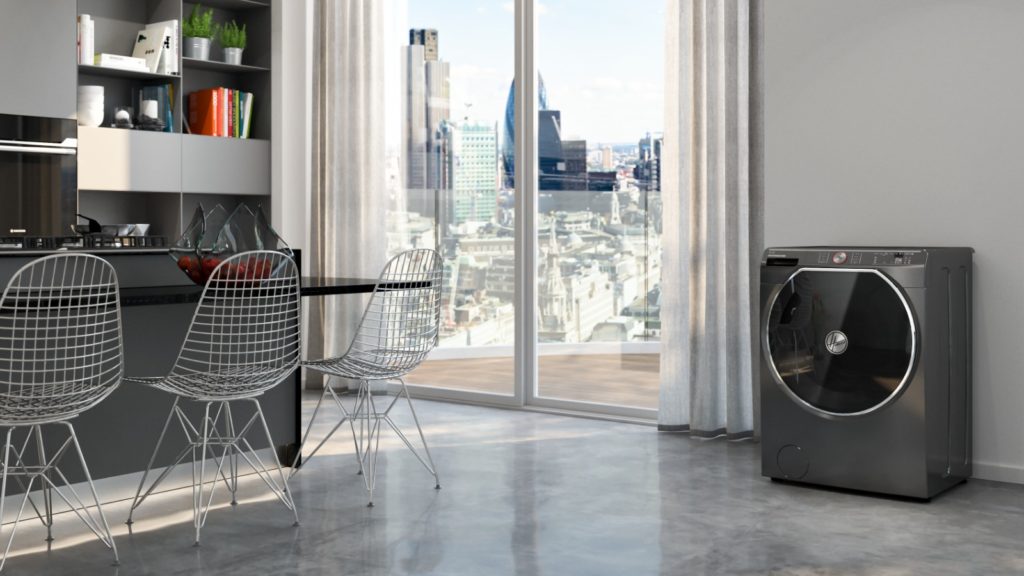
Using voice assist, consumers can choose or set wash programmes, enquire about the best programme or ask for stain removal advice when operating the Hoover AXI washing machine. It can also advise on the best time to dry on the line, based on the weather forecast
At IFA in 2018, Beko introduced AquaTech which it claims washes clothes 50% faster than a standard cycle.
And laundry appliances have also been designed to cater for a wider choice of materials, cutting down on the time which may have to have been spent on hand washing.
Luke Shipway of Caple adds: “Quick wash programmes which are used now to speed up washing times – around 15 minutes is typical and will work well for lightly soiled clothes.
“Handwash is also popular for more delicate items such as silk clothes as it washes more gently and saves the user time.”
AEG has a washing machine which is endorsed by the Woolmark for washing woollens which would have been handwash only.
And Catherine Balderson points out tumble dryers are following the lead of washing machines, as the Hotpoint ActiveCare tumble “benefits from a dedicated woollens programme, which is endorsed by Woolmark, alongside programmes for synthetics, silk and cotton.”
While the Hoover AXI washing machines offers three rapid wash cycles and an All-in-one cycle, which Steve Macdonald reports can launder a load of mixed coloured and white laundry in under an hour.
Effective and optimised
Yet the ability to launder quickly and wash and dry a wider variety of materials has not been developed in isolation to the effectiveness of cleaning.
It has seen the development of enhanced steam refreshes and stain removal programmes to ensure clothes are laundered effectively at all levels of soiling.
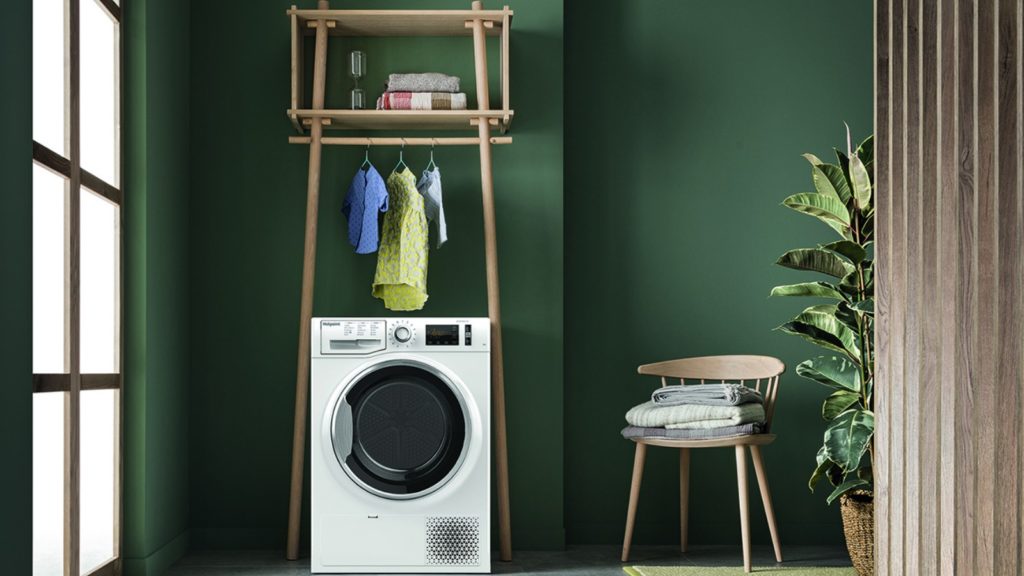
Able to remove more than 100 stains at 20°C, the Hotpoint ActiveCare washing machine features a dedicated woollens programme endorsed by Woolmark.
The Hotpoint ActiveCare 10kg washing machine reportedly removes more than 100 stains at 20°C.
Marketing manager of CDA Steve Corbett points out: “The holy grail for most purchasers is effective cleaning – so programmes that will deliver this with minimal use of energy and water are preferred.”
Not only benefiting the environment, the optimum use of water, energy and detergent also keep household bills in check.
Sara Bazeley of Indesit continues: “Consumers are increasingly realising the importance of ‘eco-appliances’, they begin to understand the long-term benefit of saving on resources, and inevitably their household bills and the planet.”
Manufacturers have long used sensor technology to optimise use of water and energy according to the soiling of the load, with many now also offer auto dosing to ensure the correct amount of detergent is dispensed.
Steve Macdonald adds: “Convenience is key for consumers and smart technology also helps to deliver that. The AXI washing machine, for instance, offers Care Dose technology, calculating the precise amount of detergent and softener required for each load.”
Ridding odours
And the machine, itself, must be easy to keep clean. Among the most common complaints centred on the washing machine is a smelly drum, and here retailers and designers can upsell with drum wash programmes.
Steve Corbett of CDA adds: “Drum clean programmes are also important – modern detergents work at a low temperature which means that fats etc are left in the drum – eventually causing a small. There are deodorant products for washing machines on the market but a drum cleaning programme is more environmentally friendly.”
Having also found out that 70% of consumers don’t unload their washing machine immediately after use, and 51% of consumers rewashing the load due to the odour, Whirlpool has even introduced Freshcare+ which gently rotates the drum with steam injections to keep garments fresh for up to six hours after the wash.
Ease of use
With all this technology, it could be forgiven if the appliances required a PhD in laundry before use.
But making sure they are easy to use, laundry appliances now span one touch washing controls through to smart functionality, driven by voice control.
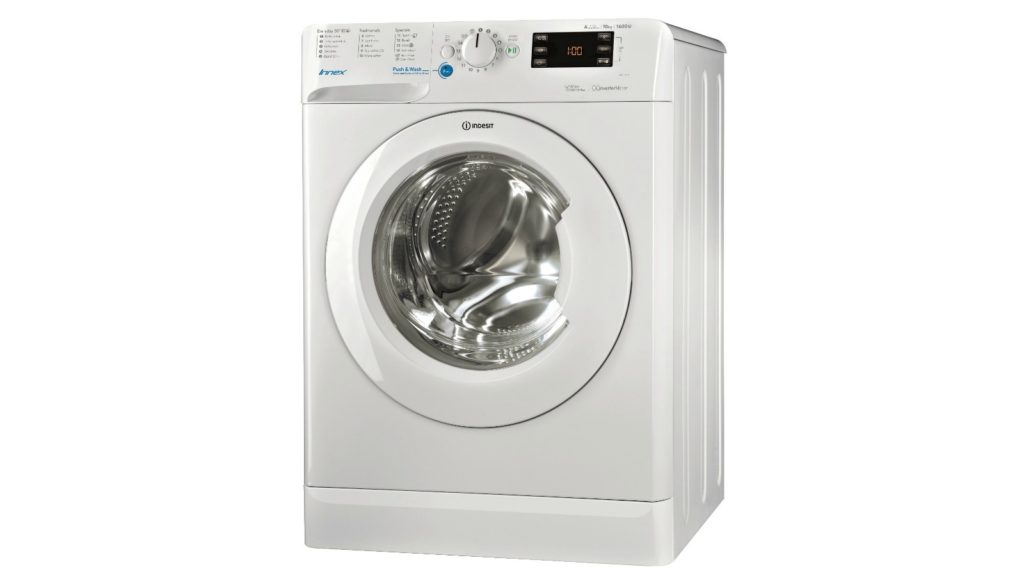
The Indesit Innex washing machine (BWE 101684X W UK) features one-touch laundry with its Push&Wash function that operates the appliance without having to adjust settings or press start. It also adapts the amount of water used according to the cycle’s need, which helps save resources
“Consumers want laundry appliances that make their everyday life easier,” agrees Catherine Balderson, continuing: “Connectivity can certainly make the chore of laundry easier, by selecting the most appropriate laundry programme dependent on the load type, while offering further resource savings.”
In fact, such is the growing importance of smart laundry appliances, Balderson adds: “The largest number of connected appliances sold last year, from within any major domestic appliance category was of washing machines.”
In fact, such has been the development in smart appliances, the Hoover AXI washing machine can inform the user the best day to dry on the line, based on weather forecasts.
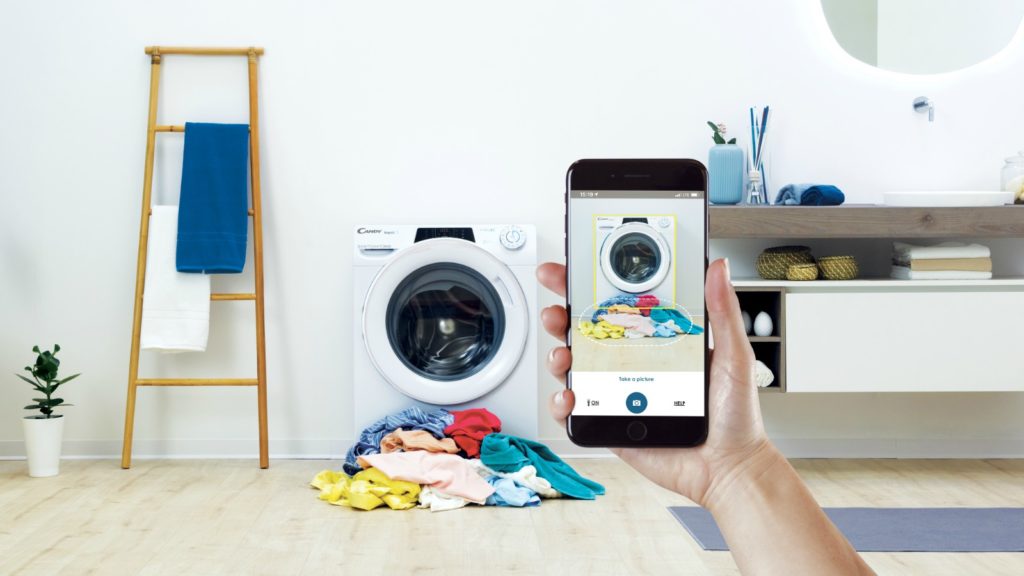
The Rapid’O washing machine is WiFi connected and can be controlled and monitored through the Candy Simply-Fi app. It boasts a Snap & Wash function where users can get programme suggestions from the app by taking a picture of the load in front of the machine
Whereas using the Candy Simply Fi app, consumers can take a photo of the load outside the Candy Rapid’O washing machine and using the ‘Snap & Wash’ function the appliance will choose the best rapid programme.
And if a connected washer is paired with a complementary dryer, it will inform the machine of its load so the tumble dryer can select the appropriate programme.
However, in a circular type motion, we return to the notion of price which currently prevents the mass uptake of connected laundry sales.
Charmaine Warner of Whirlpool comments: “One barrier to the mainstream adoption of connected appliances is price, with over a third of respondents in a recent survey quoting it as a barrier.”
But she concludes, positively, “The future, according to Whirlpool, will see the development of smart laundry appliances that make everyday living easier and more enjoyable for the user.
“Whirlpool also expects that connectivity will continue to develop rapidly in the next couple of years, and will begin to filter through to entry-level segments in the market in the future.”



